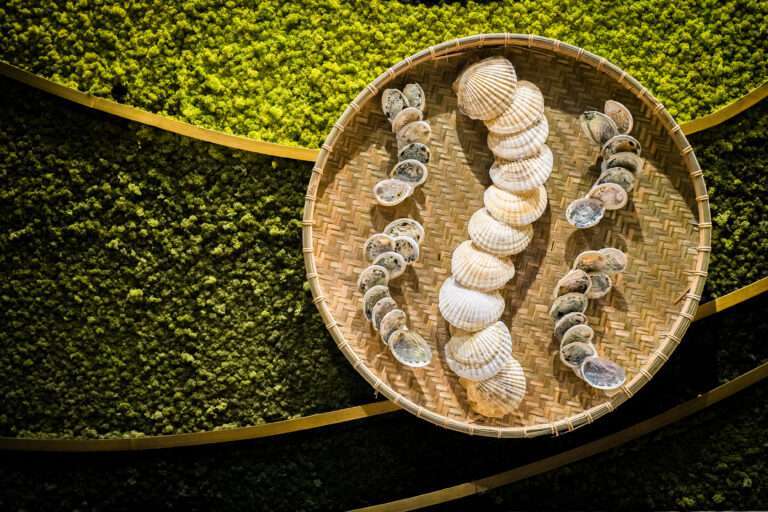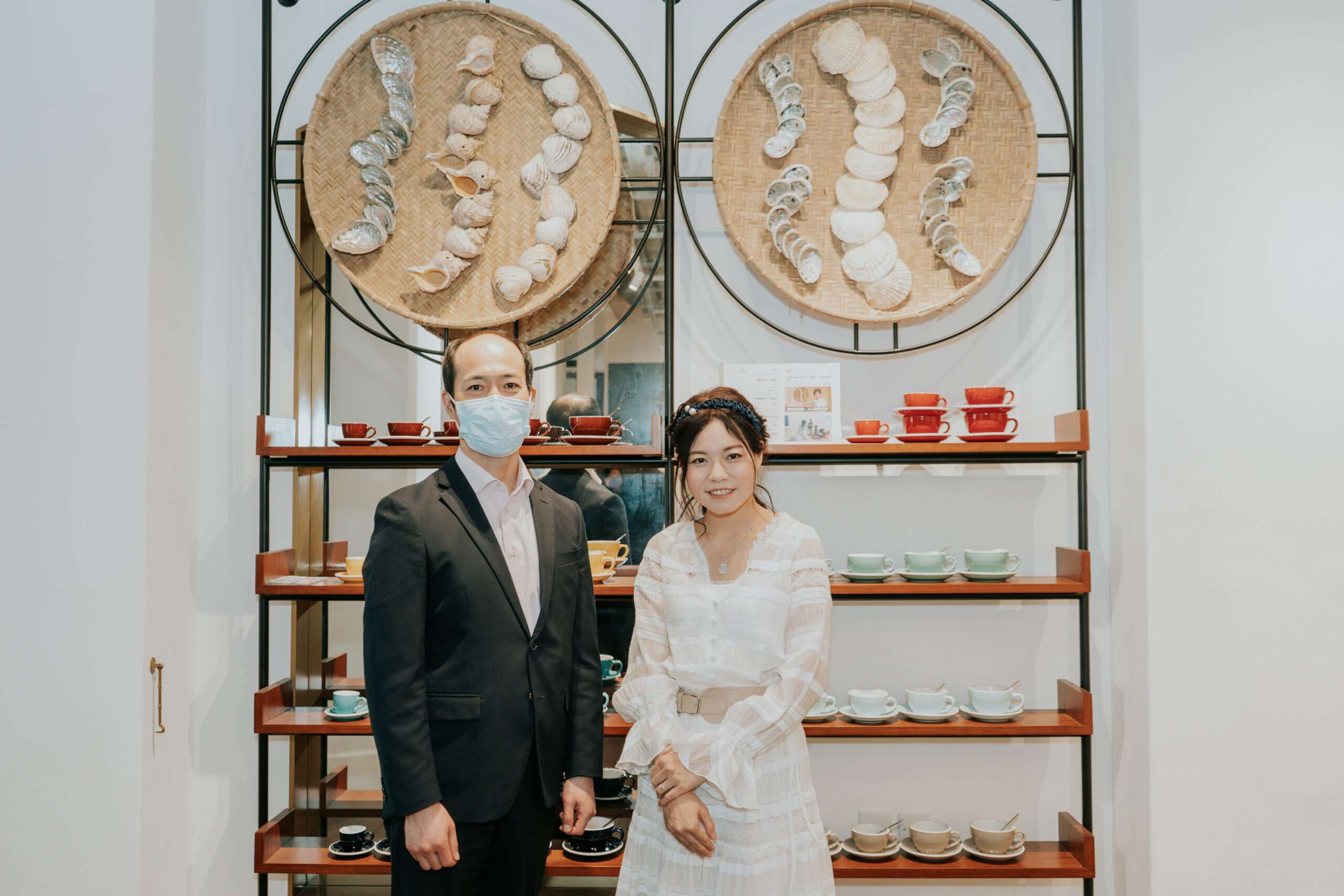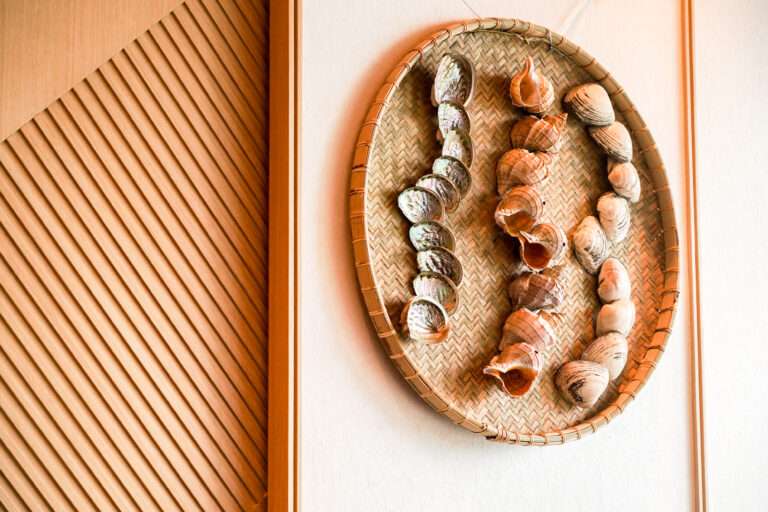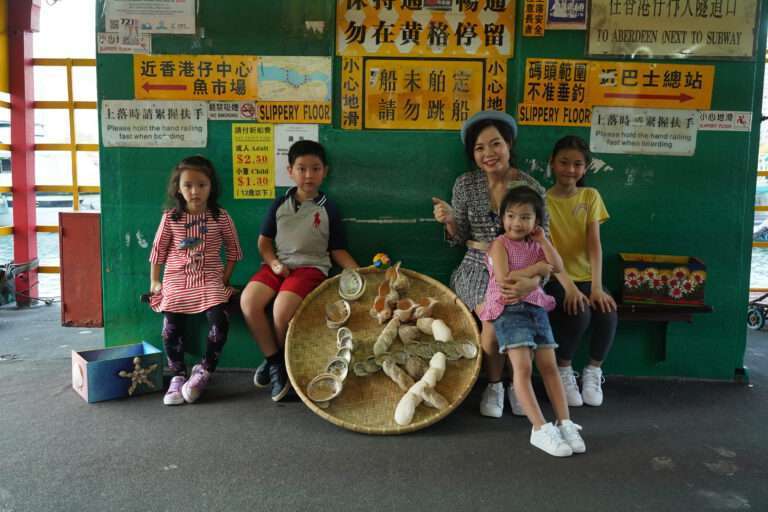Mizu Collection
Mizu
May Yeung
Medium: Seashells and Bamboo Sieve Basket
Tai Kwun, HK, 2021
May’s past sculptural work transformed two-dimensional text into three-dimensional forms. For Mizu Collection – Mizu, Kaika and Umi, she combined seashells recovered from food waste and characters against a bamboo sieve basket to mimic waves and coastlines, exploring the relationship between humans and the ocean. Using bamboo tools of Hong Kong fishermen, the oracle bone inscriptions represent the legacy of oriental culture, adding an extra accent to the artwork. Beyond advocating for marine conservation and food recycling, Mizu Collection encourages cross-disciplinary creative development of the next generation.
May’s past sculptural work transformed two-dimensional text into three-dimensional forms. For Mizu Collection – Mizu, Kaika and Umi, she combined seashells recovered from food waste and characters against a bamboo sieve basket to mimic waves and coastlines, exploring the relationship between humans and the ocean. Using bamboo tools of Hong Kong fishermen, the oracle bone inscriptions represent the legacy of oriental culture, adding an extra accent to the artwork. Beyond advocating for marine conservation and food recycling, Mizu Collection encourages cross-disciplinary creative development of the next generation.


Kaika
May Yeung
Medium: Seashells and Bamboo Sieve Basket
Tai Kwun, HK, 2021
May’s past sculptural work transformed two-dimensional text into three-dimensional forms. For Mizu Collection – Mizu, Kaika and Umi, she combined seashells recovered from food waste and characters against a bamboo sieve basket to mimic waves and coastlines, exploring the relationship between humans and the ocean. Using bamboo tools of Hong Kong fishermen, the oracle bone inscriptions represent the legacy of oriental culture, adding an extra accent to the artwork. Beyond advocating for marine conservation and food recycling, Mizu Collection encourages cross-disciplinary creative development of the next generation.
May’s past sculptural work transformed two-dimensional text into three-dimensional forms. For Mizu Collection – Mizu, Kaika and Umi, she combined seashells recovered from food waste and characters against a bamboo sieve basket to mimic waves and coastlines, exploring the relationship between humans and the ocean. Using bamboo tools of Hong Kong fishermen, the oracle bone inscriptions represent the legacy of oriental culture, adding an extra accent to the artwork. Beyond advocating for marine conservation and food recycling, Mizu Collection encourages cross-disciplinary creative development of the next generation.

Umi
May Yeung
Medium: Seashells and Bamboo Sieve Basket
Tai Kwun, HK, 2021
May’s past sculptural work transformed two-dimensional text into three-dimensional forms. For Mizu Collection – Mizu, Kaika and Umi, she combined seashells recovered from food waste and characters against a bamboo sieve basket to mimic waves and coastlines, exploring the relationship between humans and the ocean. Using bamboo tools of Hong Kong fishermen, the oracle bone inscriptions represent the legacy of oriental culture, adding an extra accent to the artwork. Beyond advocating for marine conservation and food recycling, Mizu Collection encourages cross-disciplinary creative development of the next generation.
May’s past sculptural work transformed two-dimensional text into three-dimensional forms. For Mizu Collection – Mizu, Kaika and Umi, she combined seashells recovered from food waste and characters against a bamboo sieve basket to mimic waves and coastlines, exploring the relationship between humans and the ocean. Using bamboo tools of Hong Kong fishermen, the oracle bone inscriptions represent the legacy of oriental culture, adding an extra accent to the artwork. Beyond advocating for marine conservation and food recycling, Mizu Collection encourages cross-disciplinary creative development of the next generation.
